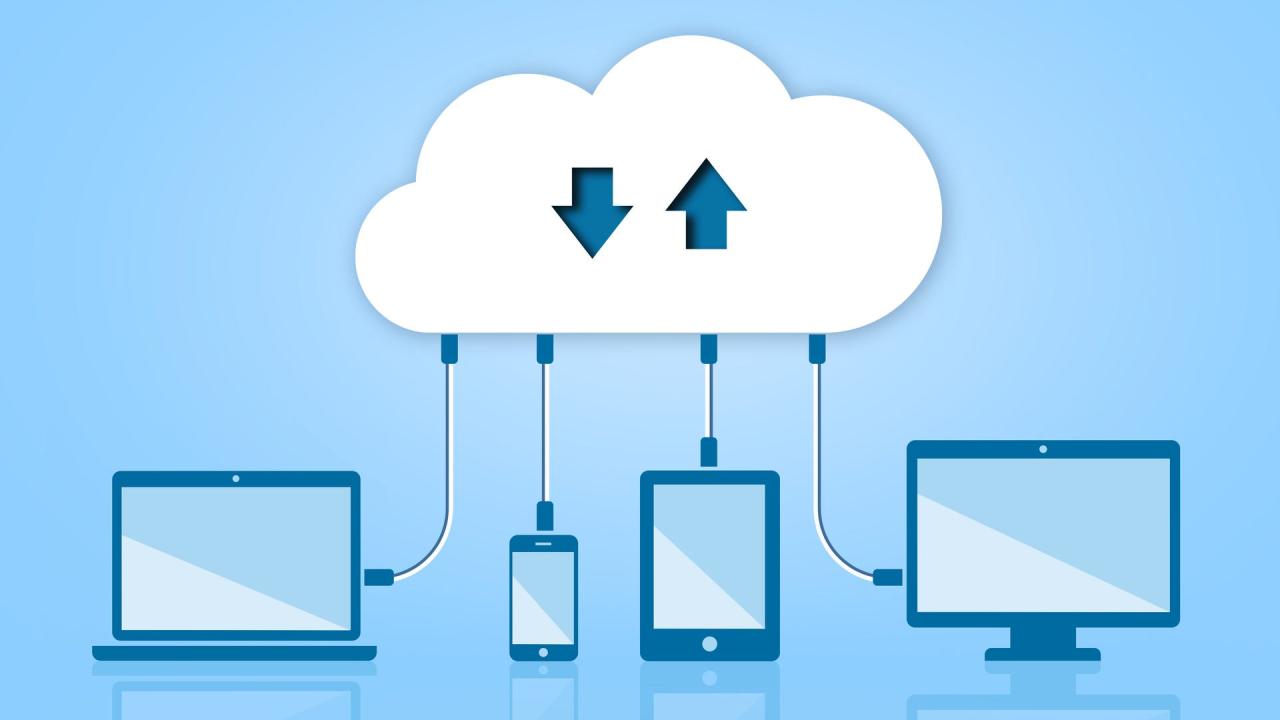In the contemporary business landscape, characterized by relentless demands for agility, scalability, and cost-efficiency, the move to the cloud is no longer an option but a strategic imperative. Cloud migration, the process of moving an organization’s digital assets, services, databases, IT resources, or applications to the cloud, is accelerating at an unprecedented pace. This fundamental shift from on-premise infrastructure to cloud-based environments is reshaping industries globally, enabling businesses to innovate faster, enhance collaboration, and achieve remarkable operational resilience. This comprehensive article delves into the core principles of cloud migration, exploring its foundational elements, the diverse models and strategies employed, its transformative applications across various sectors, and the significant challenges and immense opportunities that accompany this pervasive digital revolution.
What is Cloud Migration?

At its essence, cloud migration involves transferring data, applications, and IT infrastructure from an on-premises data center to a cloud computing environment. This could be a public cloud (like AWS, Google Cloud, Azure), a private cloud (a cloud infrastructure operated exclusively for a single organization), or a hybrid cloud (a mix of public and private clouds). The primary goal is to leverage the scalability, flexibility, cost-efficiency, and global accessibility offered by cloud services, moving away from the heavy capital expenditure and operational burden of managing physical servers and data centers.
Think of it as moving your entire digital office, including all your files, software, and tools, from a physical building you own and maintain to a high-tech, shared office complex run by specialists. You no longer worry about building maintenance, power outages, or hardware upgrades; you just pay for the space and services you use.
Key characteristics and benefits driving cloud migration include:
- Scalability and Elasticity: Cloud resources can be easily scaled up or down on demand to meet fluctuating business needs, accommodating growth without over-provisioning.
- Cost Efficiency: Shifting from capital expenditure (CapEx) on hardware to operational expenditure (OpEx) for cloud services often results in significant cost savings, paying only for what you consume.
- Increased Agility and Innovation: Cloud environments enable faster deployment of applications, rapid prototyping, and easier access to cutting-edge technologies like AI, machine learning, and big data analytics without heavy upfront investment.
- Global Accessibility: Applications and data hosted in the cloud can be accessed from anywhere, anytime, facilitating remote work and global collaboration.
- Enhanced Reliability and Disaster Recovery: Cloud providers offer robust disaster recovery capabilities, redundancy, and high availability, ensuring business continuity even in the face of outages or disasters.
- Improved Security: Reputable cloud providers invest heavily in sophisticated security measures, often exceeding what individual organizations can achieve on-premises.
A. Core Cloud Service Models
Cloud migration involves choosing the right service model based on an organization’s control requirements and managed services preferences.
- Infrastructure as a Service (IaaS): This model provides virtualized computing resources over the internet.
- What you manage: Operating systems, applications, data, and runtime.
- What the provider manages: Virtualization, servers, storage, networking.
- Analogy: Renting the plot of land and building your own house.
- Examples: Amazon EC2, Azure Virtual Machines, Google Compute Engine.
- Benefit: Offers the most control and flexibility for custom application deployments.
- Platform as a Service (PaaS): This model offers a complete development and deployment environment in the cloud, including infrastructure, operating systems, databases, and web servers.
- What you manage: Applications and data.
- What the provider manages: Everything else (runtime, OS, middleware, virtualization, servers, storage, networking).
- Analogy: Renting an apartment where the landlord provides the structure and utilities, but you furnish it.
- Examples: AWS Elastic Beanstalk, Google App Engine, Azure App Service.
- Benefit: Simplifies application development and deployment by abstracting away underlying infrastructure.
- Software as a Service (SaaS): This model delivers ready-to-use software applications over the internet, typically on a subscription basis.
- What you manage: Nothing, just use the software.
- What the provider manages: Everything (applications, data, runtime, middleware, OS, virtualization, servers, storage, networking).
- Analogy: Using a public transportation system – you just get on and ride.
- Examples: Salesforce, Google Workspace, Microsoft 365, Dropbox.
- Benefit: Easiest to use, no infrastructure or application management required by the user.
B. Cloud Deployment Models
Organizations choose how to deploy their cloud resources based on specific needs for control, security, and cost.
- Public Cloud: Services are offered over the public internet and owned/operated by a third-party cloud provider.
- Characteristics: Shared infrastructure, high scalability, pay-as-you-go pricing, rapid deployment.
- Examples: Amazon Web Services (AWS), Google Cloud Platform (GCP), Microsoft Azure.
- Benefits: Cost-effective, massive scale, reduced management burden.
- Private Cloud: Cloud infrastructure operated exclusively for a single organization. It can be physically located on the company’s premises or hosted by a third-party service provider.
- Characteristics: Dedicated resources, high control, enhanced security/compliance, customizable.
- Examples: VMware Cloud, OpenStack.
- Benefits: Maximum security and control, ideal for sensitive data or strict regulatory requirements.
- Hybrid Cloud: A combination of a public cloud and a private cloud (or on-premises infrastructure) that remain distinct but are bound together by proprietary technology or orchestration, allowing data and applications to move between them.
- Characteristics: Flexibility, optimized for specific workloads, disaster recovery, burstable capacity.
- Examples: Using a private cloud for sensitive data and bursting to a public cloud for peak demand.
- Benefits: Combines the security and control of a private cloud with the scalability and cost-efficiency of a public cloud.
C. Cloud Migration Strategies (The 6 Rs)
Organizations adopt various strategies to move their workloads to the cloud, each with its own benefits and considerations. Often, a combination of these is used.
- Rehost (Lift and Shift): Moving applications and data to the cloud without significant changes to their architecture.
- Benefit: Quickest and often least expensive initial migration, ideal for applications with no immediate need for cloud-native features.
- Consideration: May not fully leverage cloud benefits or cost optimizations without future refactoring.
- Replatform (Lift, Tinker, and Shift): Moving applications to the cloud and making some minor, non-architectural changes to optimize for the cloud environment (e.g., changing from self-managed database to a managed database service).
- Benefit: Moderately faster than re-architecting, offers some cloud benefits without a full rewrite.
- Refactor/Re-architect: Modifying or re-writing application code to fully leverage cloud-native features and services (e.g., breaking a monolithic application into microservices, using serverless functions).
- Benefit: Maximizes cloud benefits (scalability, resilience, cost-effectiveness), enables continuous innovation.
- Consideration: Most complex and time-consuming, requires significant development effort.
- Repurchase (Drop and Shop): Replacing an existing application with a cloud-native SaaS solution (e.g., replacing an on-premise CRM with Salesforce).
- Benefit: Rapid deployment, no infrastructure management, access to cutting-edge features.
- Consideration: Loss of control, potential data migration challenges, vendor lock-in.
- Retire: Decommissioning applications that are no longer needed or providing business value.
- Benefit: Reduces the migration scope, saves resources, streamlines IT portfolio.
- Retain (Revisit): Keeping certain applications on-premises, usually due to specific compliance requirements, legacy dependencies, or insufficient business justification for migration at the current time.
- Benefit: Avoids unnecessary migration costs for unsuitable workloads.
- Consideration: Requires ongoing on-premises management.
Cloud Migration’s Transformative Impact Across Industries
The shift to cloud environments is fundamentally reshaping operations, driving innovation, and creating new business models across an astonishing variety of sectors.
A. Information Technology (IT) and Software Development
Cloud migration has transformed IT operations and software development, enabling unprecedented speed and collaboration.
- DevOps and Continuous Integration/Delivery (CI/CD): Cloud platforms provide the infrastructure and tools (e.g., containerization with Docker and Kubernetes, serverless functions) to automate the software development lifecycle, enabling faster and more frequent releases.
- Scalable Infrastructure: Developers can rapidly provision and de-provision virtual servers, databases, and other resources as needed, dramatically accelerating development and testing cycles.
- Global Collaboration: Cloud-based development environments allow distributed teams to collaborate seamlessly on projects, regardless of their geographical location.
- Access to Advanced Services: Cloud providers offer managed services for AI/ML, big data analytics, IoT, and more, enabling developers to integrate cutting-edge technologies into their applications without building them from scratch.
- Cost Optimization for Development: Paying for computing resources only when needed (e.g., for testing environments) significantly reduces development costs compared to maintaining dedicated on-premises infrastructure.
B. Retail and E-commerce
Cloud migration allows retailers to handle fluctuating demand, deliver seamless online experiences, and power personalized customer interactions.
- Scalability for Peak Demand: E-commerce platforms hosted in the cloud can automatically scale to handle massive traffic spikes during sales events (e.g., Black Friday, 11.11), ensuring uninterrupted service and preventing lost sales.
- Personalized Shopping Experiences: Cloud-based data analytics and AI/ML services enable retailers to analyze vast amounts of customer data (Browse history, purchase patterns) to deliver highly personalized product recommendations, targeted promotions, and customized website experiences.
- Omnichannel Integration: Cloud platforms facilitate the integration of online and offline sales channels, providing a unified view of customer interactions and inventory across all touchpoints.
- Global Reach and Low Latency: Retailers can deploy their e-commerce sites closer to customers worldwide using global cloud regions, ensuring fast loading times and a smooth user experience regardless of location.
- Supply Chain Visibility: Cloud-based solutions integrate data from suppliers, warehouses, and logistics providers, offering real-time visibility into the entire supply chain, optimizing inventory and delivery.
C. Finance and Banking
Despite stringent regulatory requirements, financial institutions are increasingly migrating to the cloud to enhance security, improve compliance, and drive innovation.
- Enhanced Security Infrastructure: Cloud providers offer advanced security features, including robust encryption, identity and access management, and continuous threat monitoring, often surpassing the capabilities of individual banks.
- Regulatory Compliance: Cloud providers offer services and certifications that help financial institutions meet stringent regulatory requirements (e.g., GDPR, PCI DSS, SOX) and provide detailed audit trails.
- Faster Product Development: Cloud environments enable banks to rapidly develop and deploy new financial products and services (e.g., mobile banking apps, personalized investment tools), shortening time-to-market.
- Fraud Detection: Leveraging cloud-based big data analytics and AI/ML services allows financial institutions to process massive volumes of transactions in real-time for sophisticated fraud detection and risk assessment.
- Cost Reduction and Operational Efficiency: Moving away from managing expensive on-premise data centers reduces operational costs and allows IT teams to focus on strategic initiatives rather than infrastructure maintenance.
D. Healthcare and Life Sciences
Cloud migration is transforming healthcare by enabling secure data management, accelerating research, and improving patient care.
- Secure and Scalable Data Storage: Cloud platforms provide highly secure and compliant storage for vast amounts of sensitive patient data (EHRs, genomic data, medical images), addressing regulatory requirements like HIPAA.
- Accelerated Research and Drug Discovery: Cloud-based high-performance computing (HPC) and AI/ML services allow researchers to process complex genomic data, simulate molecular interactions, and analyze clinical trial results much faster, accelerating drug discovery and personalized medicine.
- Telemedicine and Remote Monitoring: Cloud infrastructure supports scalable telemedicine platforms and enables the secure ingestion and analysis of data from remote patient monitoring devices, improving accessibility and continuity of care.
- Interoperability: Cloud services can facilitate the secure exchange and integration of health data across disparate systems and providers, improving care coordination.
- Cost-Effective Infrastructure: Reducing the need for expensive on-premises data centers allows healthcare providers to reallocate resources towards patient care and research.
E. Media and Entertainment
Cloud migration is revolutionizing content creation, delivery, and audience engagement for media companies.
- Global Content Delivery (CDNs): Cloud-based Content Delivery Networks (CDNs) ensure low-latency streaming and rapid download of video, audio, and gaming content to audiences worldwide, providing a seamless user experience.
- Scalable Streaming Platforms: Cloud infrastructure supports the massive scalability required for live events and on-demand streaming services, handling millions of concurrent users.
- Media Production Workflows: Cloud services enable remote collaboration on video editing, visual effects rendering, and animation, facilitating faster production cycles and global talent utilization.
- Big Data Analytics for Personalization: Media companies leverage cloud-based data analytics to understand audience preferences, personalize content recommendations, and optimize advertising strategies.
- Cost Optimization for Storage: Cloud storage offers cost-effective solutions for archiving vast libraries of media content, including raw footage and finished productions.
Challenges and Considerations in Cloud Migration

Despite its immense benefits, the widespread acceleration of cloud migration presents significant challenges and critical considerations that demand careful attention and proactive solutions.
A. Technical Complexities
- Application Refactoring: Many legacy applications are not designed for cloud environments and require significant refactoring or re-architecting, which can be time-consuming, expensive, and require specialized skills.
- Data Migration Challenges: Moving large volumes of data securely and efficiently to the cloud, especially with strict uptime requirements, can be complex, requiring careful planning and specialized tools.
- Interoperability and Integration: Integrating cloud-based applications with existing on-premises systems or other cloud services can be challenging, leading to complex hybrid environments.
- Vendor Lock-in: Choosing a specific cloud provider’s proprietary services can lead to dependency on that vendor, making it difficult or costly to switch providers later.
- Performance Optimization: Ensuring that applications perform optimally in the cloud requires continuous monitoring, tuning, and optimization, which can be challenging in a dynamic cloud environment.
B. Security and Compliance Concerns
- Data Security: While cloud providers offer robust security, organizations are still responsible for securing their data in the cloud (e.g., proper access controls, encryption of sensitive data). Misconfigurations are a common vulnerability.
- Regulatory Compliance: Meeting industry-specific regulations (e.g., HIPAA for healthcare, PCI DSS for financial data, GDPR for privacy) in a shared cloud environment requires careful planning and collaboration with the cloud provider.
- Identity and Access Management (IAM): Properly managing user identities and access privileges across multiple cloud services and environments is complex but critical to prevent unauthorized access.
- Shared Responsibility Model: Understanding the clear division of security responsibilities between the cloud provider and the customer is crucial to avoid security gaps.
- Data Sovereignty: Data residency requirements, where data must be stored and processed within specific geographical boundaries, can complicate global cloud deployments.
C. Cost Management and Optimization
- Unforeseen Costs: Without proper planning and cost management strategies, cloud spending can escalate rapidly due to unexpected usage, unoptimized resources, or inefficient architectural choices.
- Resource Sprawl: The ease of provisioning resources in the cloud can lead to “resource sprawl” – unused or underutilized virtual machines, storage, and services that incur unnecessary costs.
- Lack of Cloud Cost Management Expertise: Many organizations lack the in-house expertise to effectively monitor, optimize, and forecast cloud spending.
- Pricing Complexity: Cloud pricing models can be complex and vary significantly across different services and providers, making cost prediction challenging.
D. Organizational and Skill Gaps
- Resistance to Change: Employees accustomed to on-premises systems may resist the transition to the cloud, requiring significant change management efforts and training.
- Skills Gap: A shortage of professionals with expertise in cloud architecture, DevOps, cloud security, and cloud cost management can hinder successful migration and operation.
- Legacy Mindset: Organizations accustomed to traditional IT operations may struggle to adapt to the agile, dynamic, and shared responsibility model of cloud computing.
- Governance and Control: Establishing effective governance models for cloud resources, access, and spending across large organizations can be challenging.
Conclusion
Cloud migration is unequivocally accelerating as the cornerstone of modern business strategy, offering unparalleled opportunities for agility, scalability, innovation, and cost-efficiency. By liberating organizations from the constraints of rigid on-premises infrastructure, it enables them to respond faster to market demands, power global operations, and harness cutting-edge technologies to drive competitive advantage. From revolutionizing IT and software development to transforming retail, finance, healthcare, and media, the pervasive influence of cloud migration is undeniable and continues to expand rapidly.
However, the journey to the cloud must be navigated with careful consideration. Addressing the formidable challenges of technical complexities, ensuring stringent security and compliance, optimizing costs, and bridging organizational skill gaps are essential for its long-term success. By fostering collaboration among IT leaders, cloud architects, cybersecurity professionals, and business stakeholders, organizations can ensure that cloud migration serves as a powerful force for strategic growth, building a more resilient, agile, and innovative future for businesses worldwide. Cloud migration isn’t just accelerating; it’s redefining the very foundation of modern enterprise.












